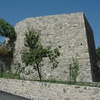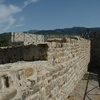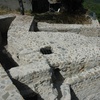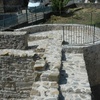Castle of Pugliano
The town of Pugliano rises on a hill which is the extreme western buttress of Monte Cucù. From here, the view encompasses the valley of the Aulella, the river that marks the border between Garfagnana and Lunigiana, and the castles of Castiglioncello, Montefiore and Regnano, as well as the fortress mentioned in the Chronicles of Giovanni Sercambi as "Casoli oltra al Giogo".
Archaeological investigations show that the castle of Pugliano was equipped with " muracase" that is, of a wall - with an approximately ellipsoidal form – made up of the village houses themselves. The entrance was placed in the north-west part of the wall, opposite the church of San Giacomo Apostolo, while in the dwelling part placed in a higher position, there was a further fortification which has now completely disappeared.
The main church is dedicated to San Jacopo and, according to local tradition, it was founded around the eighth century along a pilgrimage route that was connected to the " Santiago de Compostela Pilgrims’ Way".
Historical notes
The "villa" of Pugliano, mentioned already in eighth century parchments, depended directly on the bishop of Luni until the tenth century. Later the town came under the nobles of Pugliano, a family belonging to the faction of the Counts of Lavagna who extended their domains also in this portion of territory.
Construction of the castle was probably promoted by members of this family which, until 1299 was able to defend its legal rights against the expansionist ambitions of the City of Lucca. Even afterwards the state of Lucca could not strip the noble family of all its feudal privileges, some of which remained in force at least until 1373. For a short time, control centre passed to Spinetta Malaspina, but shortly after the "Castrum Puliani"- as is mentioned in the Golden Bull in 1376 - returned among the possessions of Lucca and was included in the list of Paolo Guinigi of military buildings necessary for defence of the borders.
The small fortress was long faithful to the Republic of Lucca, so it was one of the few that was not spontaneously put under the authority of the Marquis of Ferrara after the fall of the lordship of Paolo Guinigi (1430).












